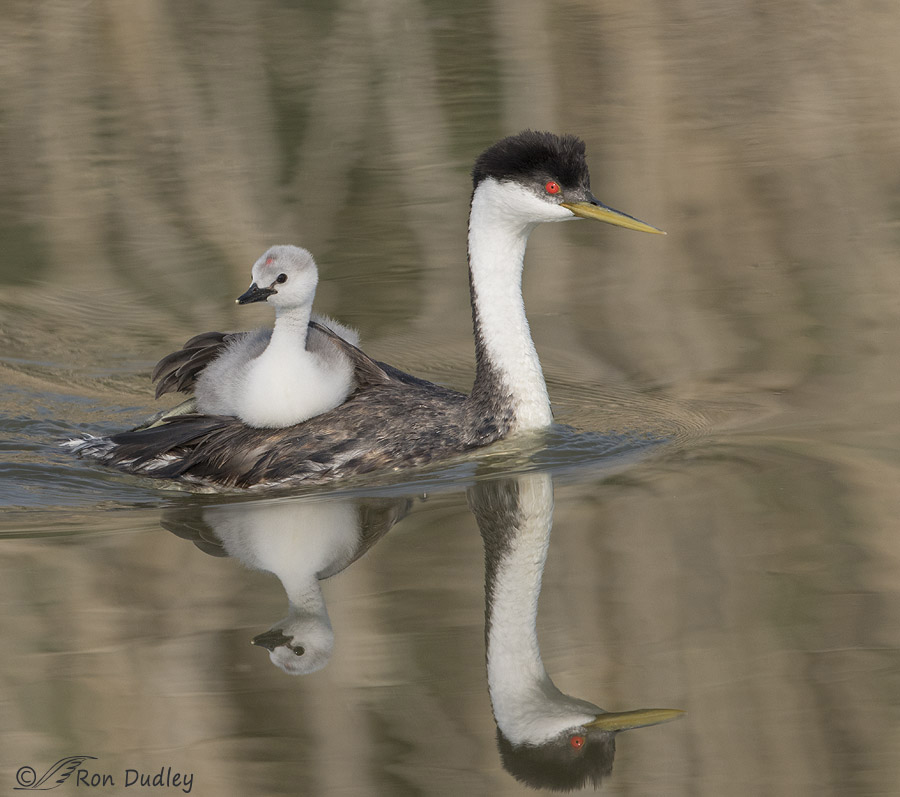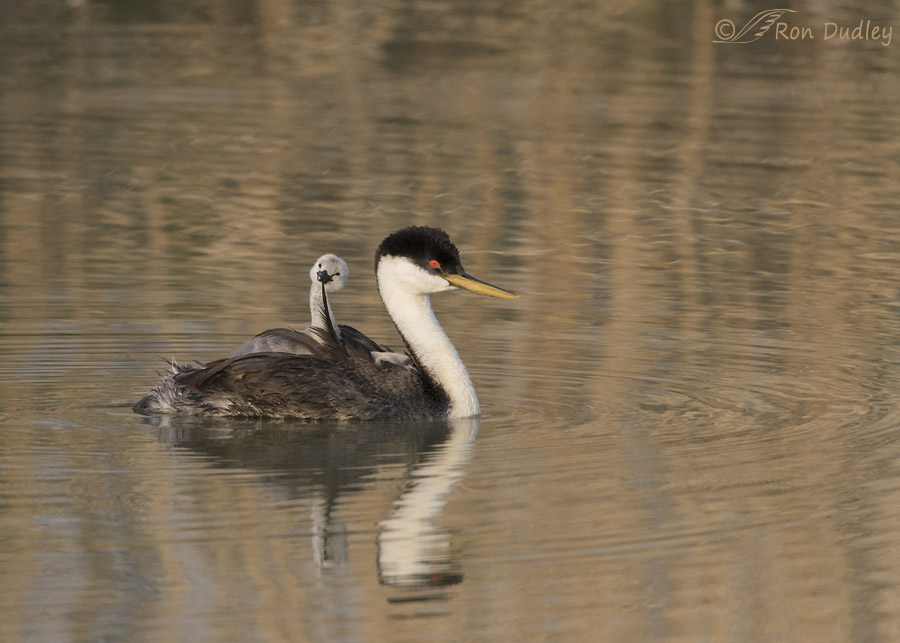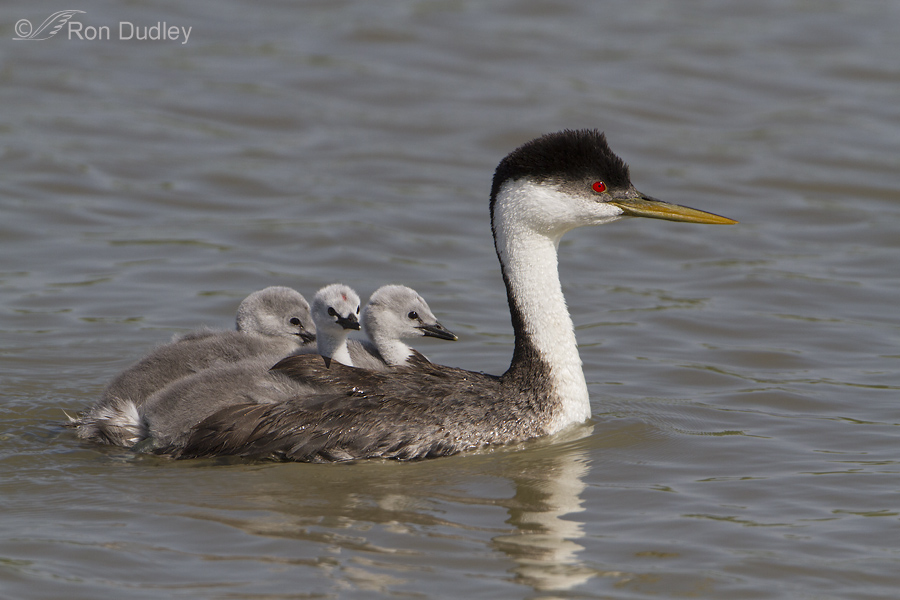Tag: crown patch
Western Grebe – Still Back-brooding A Youngster This Late In The Season
The Seldom Seen Red Crown Patch Of The Western Kingbird
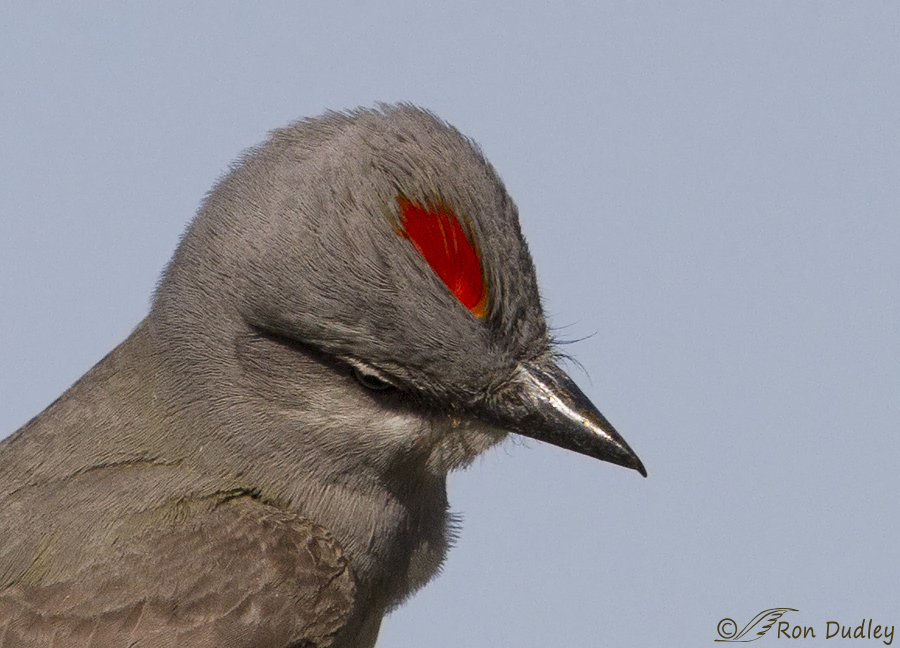
Many are surprised to learn that the Western Kingbird has a reddish-orange crown patch that bisects the top center of its head. The patch is usually kept concealed but occasionally they will quickly flash the patch at unpredictable moments, especially when other birds invade their territory. I’ve featured the crown patch on my blog previously but earlier this summer I had my best look at it so I thought I’d revisit the subject this morning.
Nest-building Western Kingbird
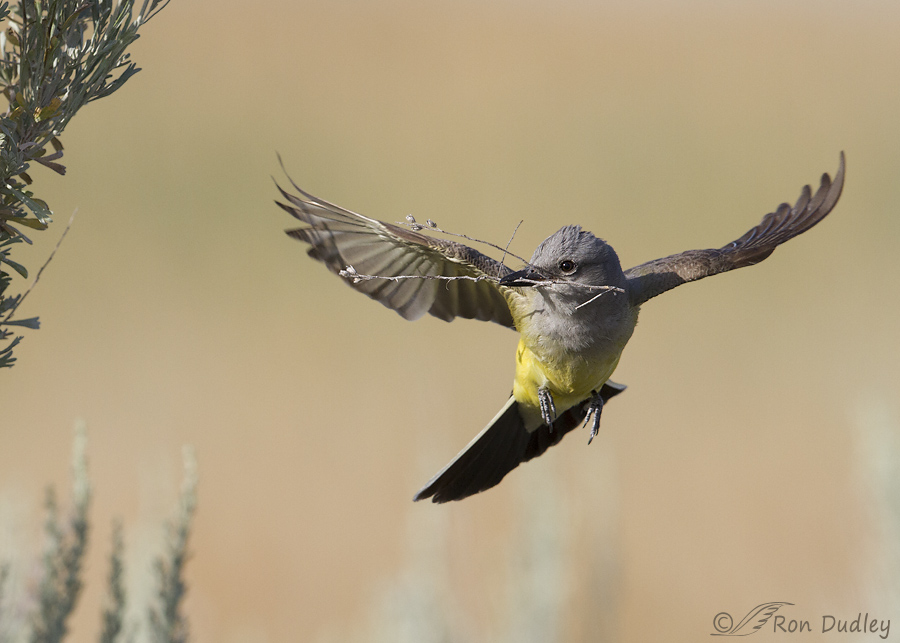
Yesterday morning we photographed an industrious female Western Kingbird as she worked at constructing her nest. In this species the sexes are similar but only the female builds the nest. The male hung around nearby as he watched over the laborious construction process and offered his mate encouragement (that was good of him don’t you think?).
Western Grebe Back-brooded Chicks (and what’s the function of that red crown patch?)
At Long Last – The Red Crown Patch Of The Western Kingbird
Occasionally, even a mediocre shot can make my day. I’ve known about the red/orange crown patch of the Western Kingbird for some time now but until yesterday had never seen or photographed it. 1/1600, f/8, ISO 400, 500 f/4, 1.4 tc It normally lies concealed under the gray feathers on the top of the head and is rarely seen or photographed. Normally the crown patch is only revealed before or during an attack on another kingbird or a potential predator threatening its nest. 1/2500, f/5.6, ISO 500, 500 f/4 The most common aggressive pose toward other kingbirds is called the wing flutter, where the wings are extended and rapidly fluttered in small arcs. But typically the crown patch is not exposed during a wing flutter unless an actual attack on the other kingbird is imminent. 1/2500, f/5.6, ISO 640, 500 f/4 I’ve included this image and the next one to show how well the crown patch is concealed. Here, as this kingbird ejects and throws off a pellet, you have a good look at the top of the head with no suggestion of a red crown patch beneath the overlying crown plumage. 1/3200, f/6.3, ISO 500, 500 f/4, 1.4 tc And another kingbird, banking at takeoff, gives us a pretty good look at the top of the head with no hint of the patch. 1/3200, f/6.3, ISO 500, 500 f/4, 1.4 tc But yesterday a gull made the mistake of landing on a perch very close to this kingbirds nest and it’s…
Western Grebe – Still Back-brooding A Youngster This Late In The Season
The Seldom Seen Red Crown Patch Of The Western Kingbird

Many are surprised to learn that the Western Kingbird has a reddish-orange crown patch that bisects the top center of its head. The patch is usually kept concealed but occasionally they will quickly flash the patch at unpredictable moments, especially when other birds invade their territory. I’ve featured the crown patch on my blog previously but earlier this summer I had my best look at it so I thought I’d revisit the subject this morning.
Nest-building Western Kingbird

Yesterday morning we photographed an industrious female Western Kingbird as she worked at constructing her nest. In this species the sexes are similar but only the female builds the nest. The male hung around nearby as he watched over the laborious construction process and offered his mate encouragement (that was good of him don’t you think?).
Western Grebe Back-brooded Chicks (and what’s the function of that red crown patch?)
At Long Last – The Red Crown Patch Of The Western Kingbird
Occasionally, even a mediocre shot can make my day. I’ve known about the red/orange crown patch of the Western Kingbird for some time now but until yesterday had never seen or photographed it. 1/1600, f/8, ISO 400, 500 f/4, 1.4 tc It normally lies concealed under the gray feathers on the top of the head and is rarely seen or photographed. Normally the crown patch is only revealed before or during an attack on another kingbird or a potential predator threatening its nest. 1/2500, f/5.6, ISO 500, 500 f/4 The most common aggressive pose toward other kingbirds is called the wing flutter, where the wings are extended and rapidly fluttered in small arcs. But typically the crown patch is not exposed during a wing flutter unless an actual attack on the other kingbird is imminent. 1/2500, f/5.6, ISO 640, 500 f/4 I’ve included this image and the next one to show how well the crown patch is concealed. Here, as this kingbird ejects and throws off a pellet, you have a good look at the top of the head with no suggestion of a red crown patch beneath the overlying crown plumage. 1/3200, f/6.3, ISO 500, 500 f/4, 1.4 tc And another kingbird, banking at takeoff, gives us a pretty good look at the top of the head with no hint of the patch. 1/3200, f/6.3, ISO 500, 500 f/4, 1.4 tc But yesterday a gull made the mistake of landing on a perch very close to this kingbirds nest and it’s…


